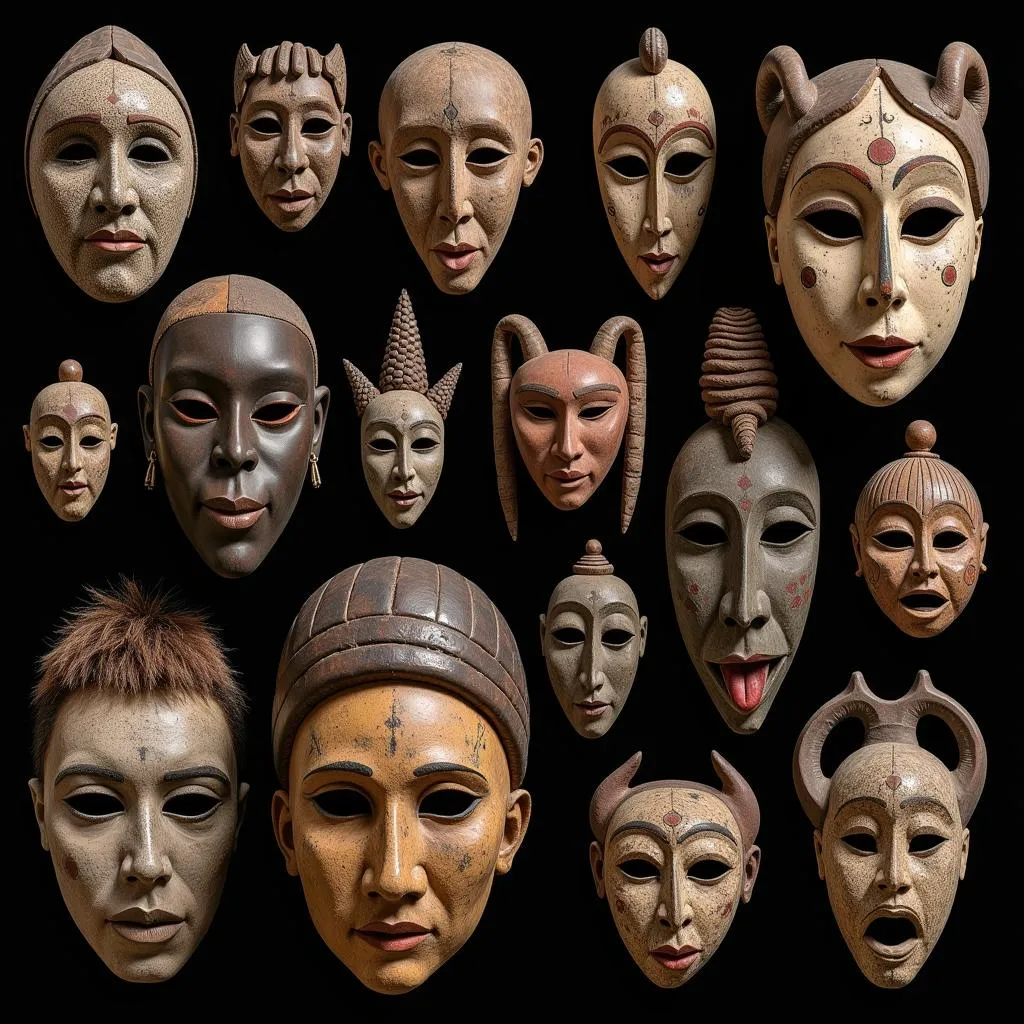African Chew Sticks for Humans: A Deep Dive into Oral Hygiene Practices
African chew sticks, also known as “miswak” or “arak,” have been an integral part of oral hygiene in many African cultures for centuries. This natural toothbrush, derived from twigs or branches of specific trees, offers a sustainable and effective alternative to modern dental care. Today, we’ll explore the history, benefits, and cultural significance of chew sticks in Africa.
A Rich History of Oral Hygiene in Africa
The use of chew sticks for oral hygiene dates back to ancient times, with evidence suggesting their use as far back as 3,000 years ago. Archaeological findings in Egypt and other parts of Africa have revealed the presence of chew sticks alongside ancient tools, indicating their importance in daily life.
The Science Behind African Chew Sticks
African chew sticks are not just a tradition; they have scientific backing for their effectiveness. Many trees used for chew sticks contain natural compounds with antibacterial and anti-inflammatory properties. For example, the Salvadora persica tree, commonly used for miswak, contains fluoride, a known ingredient in modern toothpaste.
Benefits of Chew Sticks
- Antibacterial and Anti-inflammatory Properties: Natural compounds in chew sticks combat bacteria that cause tooth decay and gum disease.
- Cleaning and Polishing: The abrasive texture of the stick removes plaque and food debris, while its fibers gently polish teeth.
- Fresh Breath: The aromatic oils present in some chew sticks offer a natural breath freshener.
- Strengthening Gums: The chewing motion stimulates blood flow to the gums, promoting their health and strength.
- Sustainability: Chew sticks are a renewable and biodegradable resource, minimizing environmental impact.
Cultural Significance of Chew Sticks in Africa
Beyond oral hygiene, chew sticks hold deep cultural significance in many African communities. They represent a connection to tradition, self-reliance, and a holistic approach to health.
Chew Sticks as a Social Symbol
In some cultures, chew sticks are used in rituals and ceremonies, signifying purity, cleanliness, and respect.
Chew Sticks as a Symbol of Identity
The use of specific types of chew sticks can be associated with different ethnic groups and regions in Africa, reflecting cultural diversity and heritage.
Choosing and Using Chew Sticks
While many trees can be used for chew sticks, some are more popular than others. Here’s a guide to choosing and using a chew stick:
- Selection: Look for a twig or branch that is about the size of your finger, has a smooth texture, and is free from any visible damage.
- Preparation: Cut the end of the stick at a 45-degree angle to create a brush-like tip.
- Use: Gently brush your teeth with the stick, applying a slight pressure. Chew the end of the stick to release the natural oils and create a more abrasive surface.
- Maintenance: After each use, rinse the chew stick thoroughly with water and store it in a dry place.
Chew Sticks in the Modern World
Despite the rise of modern oral hygiene products, African chew sticks remain relevant. Their natural benefits, sustainability, and cultural significance have sparked renewed interest in both Africa and the world.
Modern Adaptations of Chew Sticks
Some companies now offer commercially prepared chew sticks with added ingredients, such as fluoride or essential oils. These adaptations aim to combine the benefits of traditional chew sticks with modern technology.
The Future of Chew Sticks
As awareness of the health and environmental benefits of natural remedies grows, the future of chew sticks looks bright. These ancient oral hygiene practices are poised to become even more widely adopted, offering a sustainable and effective alternative to modern dental care.
FAQ
Q1: Are chew sticks safe for everyone?
A1: Chew sticks are generally considered safe for most people. However, it’s always advisable to consult with your dentist before using any new oral hygiene product, especially if you have any existing dental conditions.
Q2: Can I use chew sticks in place of toothpaste?
A2: Chew sticks can be used as a primary or secondary oral hygiene tool. They offer a natural alternative to toothpaste but may not provide the same level of fluoride protection.
Q3: Where can I buy chew sticks?
A3: Chew sticks are readily available at African grocery stores, online retailers, and some health food stores. You can also find them in specific regions of Africa where they are traditionally used.
Q4: How often should I change my chew stick?
A4: It’s recommended to change your chew stick every 1-2 days or as needed based on wear and tear.
Q5: Are there any contraindications for using chew sticks?
A5: Individuals with severe gum disease, loose teeth, or those undergoing dental treatment should consult with their dentist before using chew sticks.
Conclusion
African chew sticks represent a rich tradition of natural oral hygiene with scientific backing and deep cultural significance. As we explore the future of oral health, the sustainable and effective practices of our ancestors, such as using chew sticks, offer valuable lessons and solutions.

